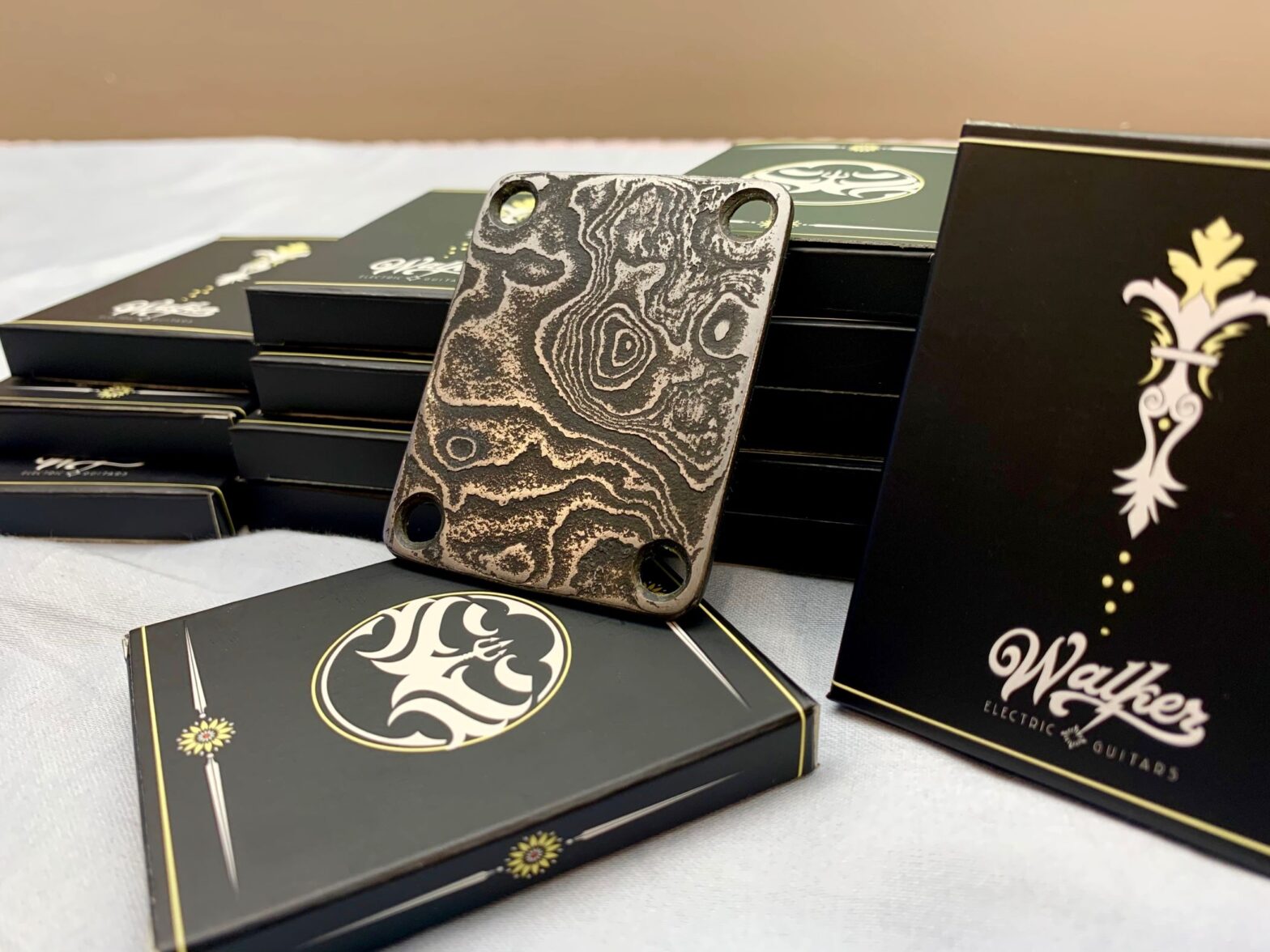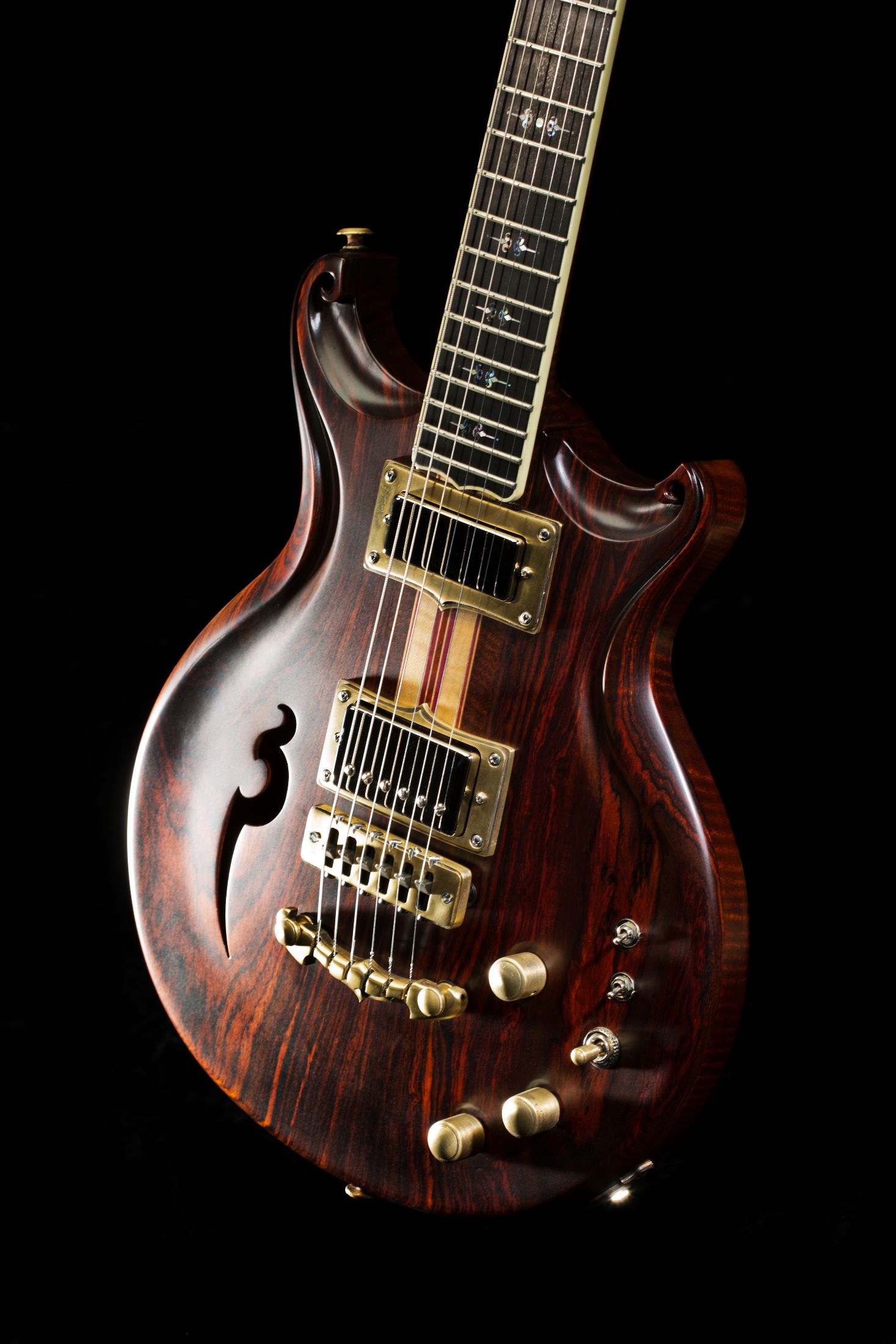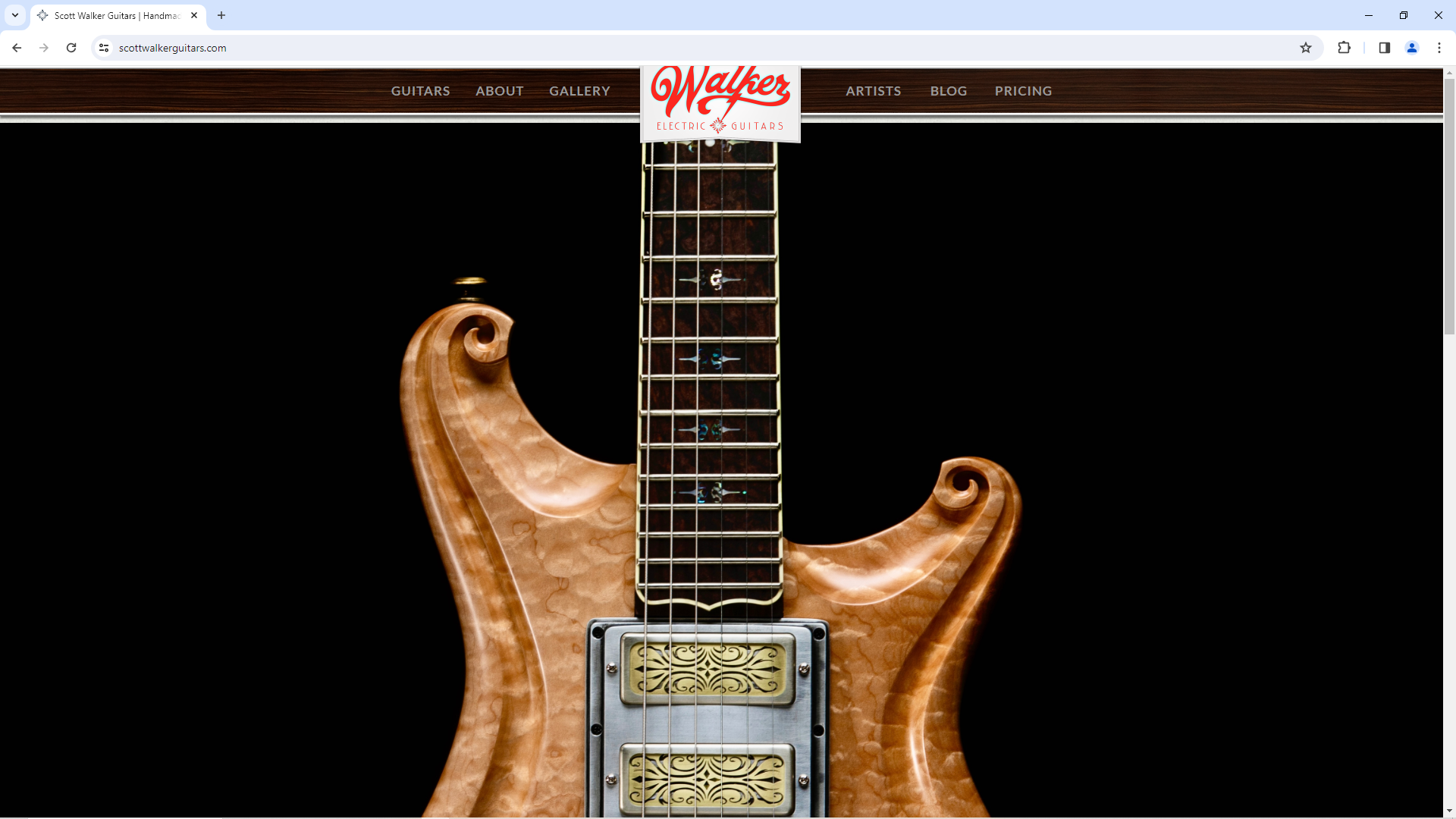Your cart is currently empty!

Damascus Neck Plates
After implementing Damascus steel in my “Katana” model, I was surprised at how musically robust and interactive it is with the woods and strings. This steel really delivers more clarity and reflection.
This discovery is what lead to the development of the neck plate. After some extensive field testing, the verdict is that the Damascus Neck Plate can change your guitars tone and feel.
Why? What’s different about it?
There are a few options out there as far as replacement or upgrading your neck plate. Thicknesses and alloys are generally the main variables in the differences of aftermarket neck plates. I’ve tried most of them (stainless steel, cold rolled steel, and brass) and found that the thicker (.100″) ones add mass to that hinge point, encouraging the strings to sustain longer.
The Damascus used in my neck plates are a blend of 3 alloys, one of them being a spring steel from recycled band saw blades.
RECYCLED BAND SAW BLADES!!!!
This is the variable that helps improve the acoustical clarity of an instrument, which essentially brightens it up.
Thicker = sustain
Alloy blend = clarity
Steve Kimock… Here’s an interesting and unexpected trove of data points and questions for the bolt on hardware modification crew.
I’ve always been a big fan of the idea of non-invasive, reversible mods for electric guitar for all the obvious reasons, cheap, quick, relatively safe, DIY “might get lucky”, etc., while remaining cognizant of the fact “Guitar” is a long equation.
So it’s always nice to run into a widget offering consistent improvement, and Scott’s Strat neck plate is one of those rare pieces.
I’ve swapped three plates so far, my 1960 White Strat (main guitar for 40 yrs), on my Wysocki Strat, a super high quality piece all around, and on my ‘60 something Mustang with the Rickenbacker horseshoe PU, kind of a dog except for the pickup. .
Two excellent instruments and one problem child all exhibiting improvements in the same direction to varying degrees from my point of view.
I tackled the White Strat first because I could swap plates without removing the neck.
Tom Cerletti added a fifth bolt under the plate 25 yrs ago to stabilize the neck against the 14 18 28 38 49 64 concert pitch string tension.
The neck hasn’t moved in a 1/4 century, it’s the instrument with which I am most intimately familiar, and the plate swap was an immediate and obvious improvement along the lines of “more everything.”
The kind of improvement you’d from expect cleaning something up that really needed it. It’s like a relief.
Same deal with the Wysocki although it’s a very different instrument in most ways, different wood, electronics, weight, set-up, Hendrix gauge light strings as opposed to super-heavy, same deal: the guitar just came forward overall, spoke better, played better.
Both of those “good guitars” came together easily, improved immediately with playability and tone, the Mustang not so much.
Maybe it’s just old/funky stuff, but the neck didn’t go back where I liked it with the new plate, playability suffered.
Punchline was it still sounded better, and after multiple attempts to get the old dog to lie down, playability was restored with no loss to the improvement in tone.
Anyway, the Mustang is illustrative of the difficulty in before/after assessment of a bolt-on.
So much can go wrong, any little change in neck angle or in the forces holding the thing together or tearing it apart can alter the previous playability and sound.
In this case the Mustang first attempt was simultaneously fucked up and improved, a testament to the positive attributes of the plate and mute witness to my hack lutherie skills.
Seemed like the worst instrument, the Mustang, improved the most.
The Wysocki, which is a ridiculously world class lightweight Strat type woke up in ways I think would be obvious to any listener.
The White Strat seemed hugely improved to me, “that’s exactly what I was praying for” type trip, but I’m SO familiar with that guitar I might be more sensitive to any change.
Bottom line, the new plate was an improvement on a great vintage Fender, an improvement on a top of the line modern boutique Strat and an improvement on a random pile of old 60’s and 70’s doggiecaster Mustang.
More everything!
Nice work Scott!
Henry Kaiser…
Being an inveterate tinkerer of parts guitars, in the Tele and Strat style, often with necks and bodies from Warmoth, I am forever
on the quest for that perfect Strat or Tele, that is always just beyond reach. Swapping necks, bridges, pickups, saddles, etc is perpetually an eternal quest for both sonic surprises, and serendipitous perfection.
When my pal Bill Krinard from Two-Rock told me about the MAGICAL NECK PLATES that Scott Walker was making, Bill told me that they had improved all of his own personal neck plate type guitars and that I ought to try one of Scott’s neck plates. I changed the neck plates on of my two Strats, and one Tele (all three of which seemed just short of being transcendent) to Scott’s MAGICAL NECK PLATES. All three guitars have now transcended and become more than the sum of their parts. This is something that is immediately evident when the guitar is played acoustically, unplugged from the cord and amp.
I can’t say I really know why this happened. Is it a different/better acoustic coupling between neck and body? Is it that the material and stiffness of Scott’s MAGICAL NECK PLATES creates a different kind of “filter” between body and neck? Is it because Scott forges the MAGICAL NECK PLATES at midnight on Halloween, during a lunar eclipse at the top of a secret radioactive volcano in Iceland, with the aurora borealis coruscating overhead in the starry skies? I just don’t know. Whatever is happening it is magical and it works for me.
Bill Kinard… To me these neck plates are like putting a set of NOS tubes in your amp. So fun to find the tone hiding in your guitar.




